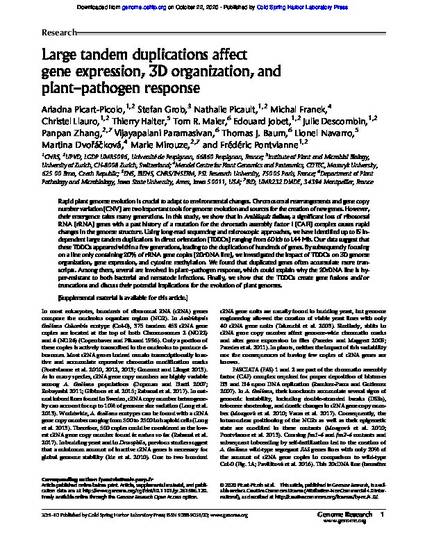
Rapid plant genome evolution is crucial to adapt to environmental changes. Chromosomal rearrangements and gene copy number variation (CNV) are two important tools for genome evolution and sources for the creation of new genes. However, their emergence takes many generations. In this study, we show that in Arabidopsis thaliana, a significant loss of ribosomal RNA (rRNA) genes with a past history of a mutation for the chromatin assembly factor 1 (CAF1) complex causes rapid changes in the genome structure. Using long-read sequencing and microscopic approaches, we have identified up to 15 independent large tandem duplications in direct orientation (TDDOs) ranging from 60 kb to 1.44 Mb. Our data suggest that these TDDOs appeared within a few generations, leading to the duplication of hundreds of genes. By subsequently focusing on a line only containing 20% of rRNA gene copies (20rDNA line), we investigated the impact of TDDOs on 3D genome organization, gene expression, and cytosine methylation. We found that duplicated genes often accumulate more transcripts. Among them, several are involved in plant–pathogen response, which could explain why the 20rDNA line is hyper-resistant to both bacterial and nematode infections. Finally, we show that the TDDOs create gene fusions and/or truncations and discuss their potential implications for the evolution of plant genomes.
Available at: http://works.bepress.com/thomas-baum/83/

This article is published as Picart-Picolo, Ariadna, Stefan Grob, Nathalie Picault, Michal Franek, Christel Llauro, Thierry Halter, Tom R. Maier et al. "Large tandem duplications affect gene expression, 3D organization, and plant–pathogen response." Genome Research (2020). doi: 10.1101/gr.261586.120.